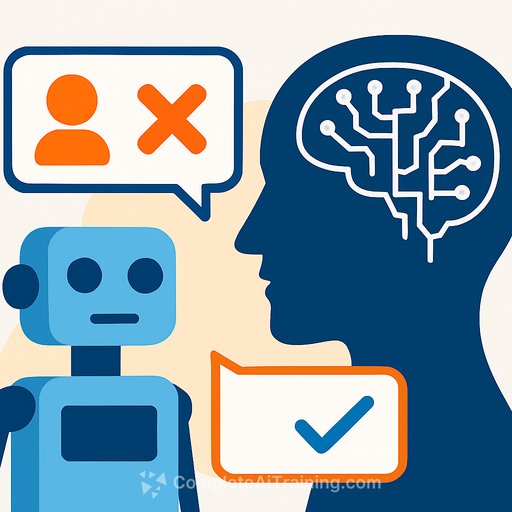AI Lie Detection: Strong Opinions, Weak Reliability
A Michigan State University-led study put AI personas to the test across 12 experiments with more than 19,000 AI "judges." The goal: decide whether humans were lying or telling the truth. The headline result is simple-AI can sometimes spot deception, but it's inconsistent and biased, making it unreliable for real decisions.
Across tasks and contexts, AI showed a tendency to call statements lies. It picked up lies at a high rate in some settings but often failed to recognize honest statements. In several experiments, AI matched human performance for short interrogations, then collapsed in more natural contexts.
Key Findings
- Lie-biased: AI was more accurate for lies (85.8%) than truths (19.5%). This skew makes overall performance unstable and risky to use as a detector.
- Context-sensitive but not dependable: In short interrogation scenarios, AI's deception accuracy was comparable to humans. In non-interrogation settings (e.g., feelings about friends), AI shifted to a truth-bias and topped out at 57.7% accuracy.
- Ecological base rates matter: When the truth-lie distribution reflected real-world proportions, accuracy plunged to 15.9% in one benchmark where humans typically exceed 70%.
- Modality and persona nudged outcomes: Audio vs. audiovisual inputs and different AI personas influenced judgments, but didn't solve the core reliability gap.
Why this happens
Humans default to believing others-a well-studied tendency called Truth-Default Theory. AI sometimes mimicked this truth-bias in everyday contexts, yet flipped to a lie-bias under interrogation-like prompts. That sensitivity to framing shows the models are picking up surface cues, not the deeper emotional or contextual signals humans use.
For background on truth-bias in human judgment, see Truth-Default Theory. The study appears in the Journal of Communication.
What this means for researchers and practitioners
- Do not use generative AI as a lie detector in hiring, compliance, security, or clinical contexts. The bias toward calling statements lies can create serious harms.
- Report base rates and context. Performance swings widely depending on the proportion of lies, the prompt, and the input modality.
- Treat model rationales as hypotheses, not evidence. LLM "explanations" are not indicators of ground truth.
- Keep a human in the loop. If you must triage with AI, require expert review, disclose limitations, and log decisions for auditing.
- Evaluate prospectively. Use preregistered protocols, out-of-sample tests, and ecological tasks to avoid inflated accuracy.
Design notes for future studies
- Vary truth-lie base rates and measure calibration, not just raw accuracy.
- Compare interrogation-style prompts vs. conversational contexts; expect different biases.
- Test audio-only vs. audiovisual inputs; quantify the marginal gain of visual cues.
- Probe persona effects and prompt framing; document prompt templates and seeds for reproducibility.
- Report uncertainty and decision thresholds; avoid binary labels when confidence is low.
Bottom line
AI can imitate some patterns of human judgment, but it lacks the contextual and emotional depth that honest lie detection demands. Until accuracy stabilizes across realistic base rates and settings, treat AI as a tool for exploration, not an arbiter of truth.
If you're building evaluation workflows or training teams on responsible AI use, explore our curated AI courses by job to strengthen model testing, auditing, and decision protocols.
Your membership also unlocks:






